On April 5…
” We shall defend our island, whatever the cost may be, we shall fight on the beaches, we shall fight on the landing grounds, we shall fight in the fields and in the streets, we shall fight in the hills; we shall never surrender.”
~ Sir Winston Churchill

1792– George Washington exercised the first presidential veto of a Congressional bill.
The bill introduced a new plan for dividing seats in the House of Representatives that would have increased the amount of seats for northern states. Washington believed the plan was unconstitutional because, in providing for additional representatives for some states, it would have introduced a number of representatives higher than that defined by the Constitution.
The next day, the House attempted to override the President’s veto but failed to reach the two thirds vote required.
Congress then decided to apportion representatives at “the ratio of one for every thirty-three thousand persons in the respective States.”
Washington signed the revised bill into law on April 14.
Veto Factoid: Grover Cleveland used his presidential veto power 414 times (including 110 pocket vetoes) – with only 2 of them overridden – but Franklin Roosevelt is the all-time king of vetoes at 635 (including 263 pocket vetoes), with just 9 overridden.
And before you ask, a “pocket veto” is the result of a president rejecting a bill by doing nothing, and if Congress adjourns before ten days have passed (excluding Sundays), the bill is not enacted into law. It can’t be overridden and must be reintroduced.
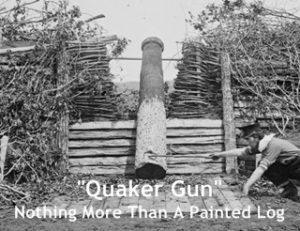
1862– Union forces under General George McClellan arrived at Yorktown, Virginia, and established siege lines instead of directly attacking the Confederate defenders.
Big Mistake (and McClellan made many of them).
McClellan was discouraged by what he thought was a substantial force resting inside of strong and well-armed fortifications near Centerville, VA.
The Confederates he saw were actually 11,000 troops under General John B. Magruder. Although vastly outnumbered, Magruder staged an elaborate ruse to fool McClellan.
He ordered “Quaker Guns” (logs painted black) placed in redoubts to give the appearance of numerous artillery pieces. Magruder marched his men back and forth to enhance the illusion. The performance worked, as McClellan was convinced that he could not make a frontal assault.
He opted to lay siege instead. Not until May 4 did Magruder’s troops finally abandon Yorktown, giving the Confederates valuable time to gather their troops near Richmond.
The campaign climaxed in late June when McClellan was driven away from the gates of Richmond in the Seven Days’ battles.
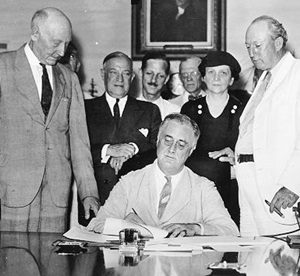
1933– President Franklin Roosevelt sign Executive Order 6102 “forbidding the Hoarding of gold coin, gold bullion, and gold certificates within the continental United States.”
The order required all persons to deliver on or before May 1, 1933, all but a small amount of gold coin, gold bullion, and gold certificates owned by them to the Federal Reserve, in exchange for $20.67 (consumer price index, adjusted value of $400 today) per troy ounce.
Violation of the order was punishable by fine up to $10,000 (equivalent to $208,000 today) or up to ten years in prison, or both.
Gold Factoid: The limitation on gold ownership in the U.S. was repealed after President Gerald Ford signed a bill legalizing private ownership of gold coins, bars and certificates by an act of Congress which went into effect December 31, 1974.
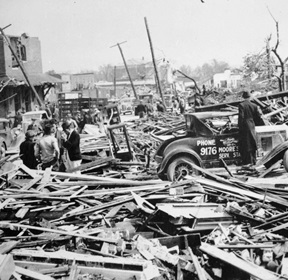
1936– The fourth deadliest tornado in U.S. history slammed into Tupelo, MS. It registered an F5 (the most dangerous) on the Fujita scale, causing total destruction along its path.
The tornado claimed the lives of 233 people but one-year old Elvis Presley and his mother survived.

1943– 82 American bombers accidentally caused more than 900 civilian deaths, including 209 children, and 1,300 wounded among the civilian population of the Belgian town of Mortsel.
The Eighth American Bomber Command’s target was the Erla-factory – formerly a Minerva car factory, then used to repair Luftwaffe planes.
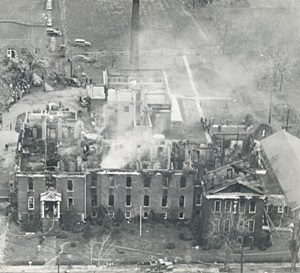
1949– A fire at St. Anthony’s Hospital in Effingham, Illinois, killed 77 people.
The inferno began shortly before midnight on April 4 and soon raged out of control during the early morning hours of April 5.
The 100-bed hospital was constructed mainly out of wood and brick. Parts of the building dated back to 1875. It contained open corridors and staircases. Many walls and ceilings were covered with oilcloth fabrics and combustible soundproof tiles. The building lacked sprinklers as well as fire detection and alarm systems.
There were 116 patients and ten staff on duty when the fire started. Many of them were trapped on the upper floors by the rapid spread of the fire. These included eleven newborn infants in the nursery.
The cause of the fire remains unknown.
The video is a bit long but well worth watching…
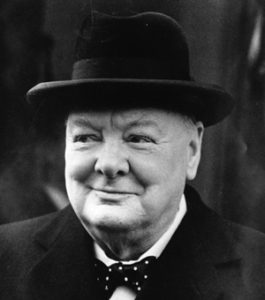
1955– Sir Winston Leonard Spencer Churchill, the British leader who guided Great Britain and the Allies through the crisis of World War II, retired as prime minister of Great Britain.
After the outbreak of World War II in Europe, Churchill replaced Neville Chamberlain as prime minister of a new coalition government. In the first year of his administration, Britain stood alone against Nazi Germany, but Churchill promised his country and the world that Britain would “never surrender.”
He rallied the British people to a resolute resistance and expertly orchestrated Franklin D. Roosevelt and Joseph Stalin into an alliance that eventually crushed the Axis.

1958– Ripple Rock, an underwater mountain that had two peaks (9 feet and 21 feet below the surface) in the Seymour Narrows of the Discovery Passage in British Columbia, Canada, was destroyed in one of the largest non-nuclear controlled explosions in history.
It was a marine hazard in what the explorer George Vancouver described as “one of the vilest stretches of water in the world.”
The hazard was not only hitting the rock but also big, dangerous eddies caused by tidal currents round the rock.
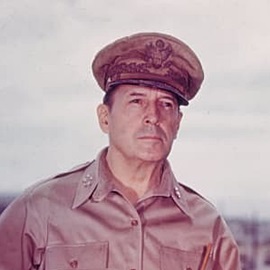
1964– Five-star Gen. Douglas MacArthur died of biliary cirrhosis, a slow, progressive destruction of the small bile ducts of the liver. He was 84.
He was a Chief of Staff of the United States Army during the 1930s and played a prominent role in the Pacific theater during World War II, receiving the Medal of Honor for his service in the Philippines Campaign.
On September 2, 1945. MacArthur, as commander in chief U.S. Army Forces Pacific, accepted the formal Japanese surrender aboard USS Missouri, thus ending hostilities in World War II.
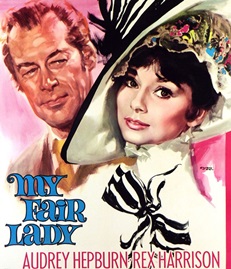
1965– At the 37th Academy Awards, My Fair Lady won 8 Oscars.
Among those eight were Best Picture, Best Director (George Cukor), and Best Actor (Rex Harrison).
Julie Andrews (Mary Poppins) won Best Actress.
Snub Factoid: Audrey Hepburn, the female lead in My Fair Lady, was controversially not nominated for Best Actress. The unpopularity of her replacing Julie Andrews – who had originated the role on Broadway – as well as the revelation that the majority of Hepburn’s singing in the film was dubbed by Marni Nixon, were seen as the main reasons for the snub.
Multiple Chances Factoid:The ceremony marked the only time in Oscar history that three films got twelve or more nominations: Mary Poppins (13 with 5 wins), My Fair Lady (12 with 8 wins), and Becket (12 with 1 win).
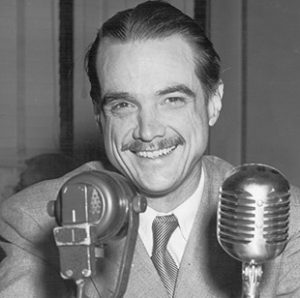
1976– Howard Hughes, one of the richest men to emerge from the American West during the 20th century, died while flying from Acapulco to Houston.
In his final years, the billionaire became obsessed with privacy. Other than a few male aides, no one saw Hughes, and he sometimes worked for days at a stretch in a black-curtained room without sleeping.
Emaciated and deranged from too little food and too many drugs, Hughes finally became so ill that his aides decided that he needed medical treatment. He died in his airplane at the age of 70.

1981– Canned Heat lead singer Bob Hite died of a drug overdose. He was 38.
During a break between sets at The Palomino Club in North Hollywood, Hite was handed a drug vial by a fan. Thinking it contained cocaine, Hite stuck a straw into the vial and snorted it.
The drug turned out to be heroin and Hite turned blue and collapsed. Roadies put Hite in the band’s van and drove him to a nearby home where he died.
Let’s Work Together was the band’s only top ten hit to feature Hite’s vocals. Their two biggest hits – On The Road Again and Going Up The Country – featured guitarist Alan Wilson on lead.
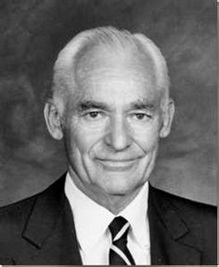
1992– Sam Walton died of multiple myeloma at the age of 74.
He was best known for founding Walmart and Sam’s Club. Wal-Mart Stores Inc. grew to be the world’s largest corporation by revenue as well as the biggest private employer in the world.
At the time of his death, his company employed 380,000 people.

1994– Kurt Cobain, lead singer, songwriter and guitarist with Nirvana, died in his Seattle home at the age of 27.
His body was found dead on April 8 by electrician Gary Smith, who had arrived to install a security system, but the coroner’s report estimated Cobain died on April 5.
The Seattle Police Department incident report stated that “Kurt Cobain was found with a shotgun across his body, had a visible head wound and there was a suicide note discovered nearby.”
The note stated that Cobain had not “felt the excitement of listening to as well as creating music, along with really writing for too many years now.”
A high concentration of heroin and traces of diazepam were also found in his body.
Idle Thought: I still have serious doubts that his death was a suicide.
1 / The last four lines of the “suicide note” which were written after Cobain signed his name, were not written in his handwriting.
2 / There were no legible fingerprints on the shotgun that inflicted the fatal wound to Cobain. There were also no fingerprints on the pen used to write the “suicide note” or on the box of shotgun shells. It is hard to imagine that Cobain could shoot himself without leaving fingerprints on the gun.
3 / He died with three times a lethal dose of heroin in his bloodstream. Such a dose would knock even the most tolerant addict unconscious in seconds.
4 / Finally, his credit card was used twice between the time he died (as determined by the medical examiner) and when his body was found.
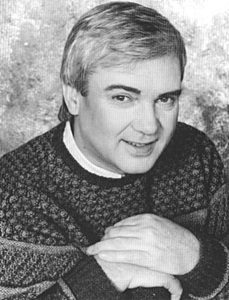
2006– While on a tour of England, singer Gene Pitney suffered a fatal heart attack and died at the age of 66.
Pitney charted sixteen Top 40 hits in the United States, four of them in the Top 10. He also wrote Rubber Ball for Bobby Vee, He’s A Rebel for the Crystals, and Hello Mary Lou for Rick Nelson.
In 2002, he was inducted into the Rock and Roll Hall of Fame.

2008– Academy Award winning actor Charlton Heston died at the age of 84.
His death certificate listed pneumonia as the cause of death although in 2002, he publicly announced that he had been diagnosed with symptoms consistent with Alzheimer’s disease.
He appeared in 100 films over the course of 60 years. His most memorable roles were in The Greatest Show On Earth, The Ten Commandments, The Agony and The Ecstasy, Planet of The Apes, Midway and Ben-Hur (for which he won the Academy Award for Best Actor).
He created a whirlwind of controversy at the 2000 NRA convention when he raised a rifle over his head and declared that a potential Al Gore administration would take away his Second Amendment rights “from my cold, dead hands.”
In July 2003, in his final public appearance, Heston received the Presidential Medal of Freedom at the White House from President George W. Bush.
Compiled by Ray Lemire ©2020 RayLemire.com / Streamingoldies.com. All Rights Reserved.